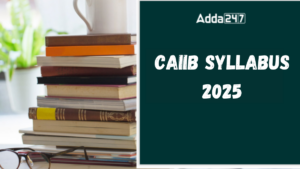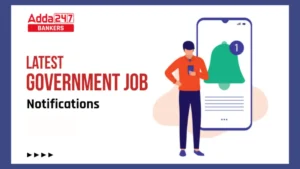Dear IBPS Clerk Aspirants,
The reasoning is a game of wits and presence of mind! Yes, it is true and it might seem as the greatest of the challenge after English Section’s surprises but yet this one can easily be dealt with. You just need correct practice and hardwire your brain to quickly make decisions about what to attempt and what to leave. And for same we are providing you questions of Reasoning Question and Answers. Solve these to Practice latest pattern reasoning question for bank exams.
Directions (1-5): Study the information and answer the following questions:
In a certain code language
” you had leave India ” is coded as ” L2% Z19% V15% M18% ”
” one hand press your ” is coded as ” M12% Z19* I11% L2*”
” should come for event ” is coded as ” S8* L24* L21% E22% ”
Q1.What is the code for ‘enhance’ in the given code language?
(a) N22%
(b) M2%
(c) M22*
(d) M22%
(e)None of these
Q2.What is the code for ‘former’ in the given code language?
(a) L21*
(b) M21*
(c) L2*
(d) L21%
(e)None of these
Q3.What is the code for ‘country’ in the given code language?
(a) M24%
(b) K24%
(c) L24%
(d) J24%
(e)None of these
Q4.What is the code for ‘introduce’ in the given code language?
(a) M18*
(b) N18%
(c) M1%
(d) M18%
(e)None of these
Q5.What is the code for ‘arrived’ in the given code language?
(a) J26%
(b) I2%
(c) I26%
(d) K26%
(e)None of these
Directions (6-10): Study the following information carefully and answer the given questions.
Eight people J, K, L, M, N, O, P and Q are member of family. Among them four are males and four are females. There are three husbands, three wives, two daughters, and two sons in the family. Each member of the family likes different sweet i.e. Barfi, Peda, Halva, Ladoo, Jalebi, Imarti, Tilpatti and Petha. They all are sitting around a circular table facing the centre.
No male like Halva. Q likes Jalebi and married to the one who like Imarti. J is father of L and O, who is a male and likes Imarti. J and K cannot sit adjacent to each other. All females sit together. M likes Petha and is sitting second to the left of her father. M is daughter of L, who is second to the right of her son. The one who like Tilpatti is married to the one who like Ladoo and neither J nor K likes Ladoo. N likes Halva and is sitting between the one who like Peda and the one who like Tilpatti. P is father of K and is sitting between two male members.
Q6. How is O related to K?
(a) Mother
(b) Father
(c) Maternal Uncle
(d) Grandfather
(e) None of these
Q7. J likes which of the following sweet?
(a) Petha
(b) Imarti
(c) Peda
(d) Barfi
(e) None of these
Q8. Which of the following pairs is not correctly matched?
(a) P – Ladoo
(b) K – Peda
(c) N – Halva
(d) J – Tilpatti
(e) None of these
Q9. Four of the following five are alike in a certain way and hence they form a group. Which one of the following does not belong to that group?
(a) Halva
(b) Tilpatti
(c) Jalebi
(d) Peda
(e) Petha
Q10. Who like Ladoo?
(a) J
(b) K
(c) L
(d) P
(e) None of these
Directions (11-15): In each of the questions below are given four statements (a), (b), (c) and (d) followed by two conclusions numbered I and II. You have to take the given statements to be true even if they seem to be at variance with commonly known facts. Read all the conclusions and then decide which of the given conclusions logically follows from the given statements disregarding commonly known facts. Give answer
(a) if only conclusion I follows.
(b) if only conclusion II follows.
(c) if either conclusion I or II follows.
(d) if neither conclusion I nor II follows.
(e) if both conclusion I and II follow.
Q11. Statements:
a. All flowers are buses.
b. Some buses are cats.
c. All cats are tigers.
Conclusions:
I. Some tigers are buses.
II. Some tigers are flowers.
III. Some cats are flowers.
IV. Some buses are tigers.
(a) None follows
(b) Only I and II follow
(c) Only III and IV follow
(d) Only I and IV follow
(e) Only II and III follow
Q12. Statements:
a. All fans are rooms.
b. No room is green.
c. Some windows are green.
Conclusions:
I. Some windows are fans.
II. Some windows are rooms.
III. Some fans are green.
IV. No green is fan.
(a) Only I follows
(b) Only III follows
(c) Only IV follows
(d) Only II and IV follow
(e) All follow
Q13. Statements:
a. Some tablets are rains.
b. All dogs are rains.
c. All rains are chairs.
Conclusions:
I. Some chairs are tablets.
II. All dogs are chairs.
III. Some tablets are dogs.
IV. Some tablets are chairs.
(a) All follow
(b) Only I, II and III follow
(c) Only II, III and IV follow
(d) Only III and IV follow
(e) None of these
Q14. Statements:
a. No man is sky.
b. No sky is road.
c. Some men are roads.
Conclusions:
I. No road is man.
II. No road is sky.
III. Some skies are men.
IV. All roads are men.
(a) None follows
(b) Only I follows
(c) Only I and III follow
(d) Only II and III follow
(e) None of these
Q15. Statements:
a. Some candles are houses.
b. Some houses are trains.
c. Some trains are roads.
Conclusions:
I. Some roads are candles.
II. Some trains are candles.
III. Some roads are houses.
IV. Some candles are roads.
(a) None follows
(b) All follow
(c) Only I and III follow
(d) Only II and III follow
(e) Only III and IV follow
You May also like to Read:





 CAIIB Syllabus and Exam Pattern 2026, Do...
CAIIB Syllabus and Exam Pattern 2026, Do...
 Latest Govt Jobs Notification 2026, Upco...
Latest Govt Jobs Notification 2026, Upco...
 RBI Allows Aryaman Financial Arm to Star...
RBI Allows Aryaman Financial Arm to Star...








